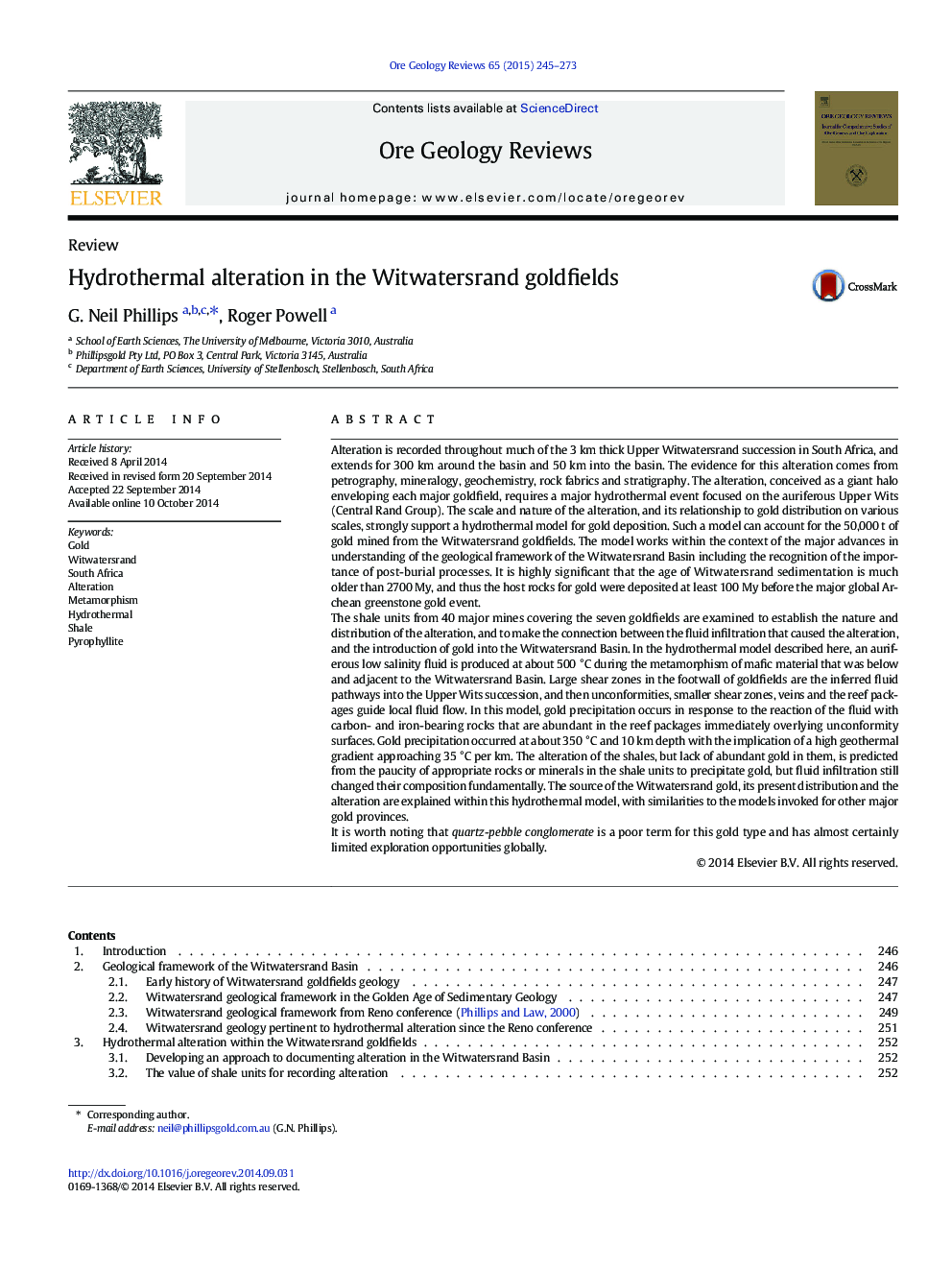| کد مقاله | کد نشریه | سال انتشار | مقاله انگلیسی | نسخه تمام متن |
|---|---|---|---|---|
| 4697268 | 1351868 | 2015 | 29 صفحه PDF | دانلود رایگان |

Alteration is recorded throughout much of the 3 km thick Upper Witwatersrand succession in South Africa, and extends for 300 km around the basin and 50 km into the basin. The evidence for this alteration comes from petrography, mineralogy, geochemistry, rock fabrics and stratigraphy. The alteration, conceived as a giant halo enveloping each major goldfield, requires a major hydrothermal event focused on the auriferous Upper Wits (Central Rand Group). The scale and nature of the alteration, and its relationship to gold distribution on various scales, strongly support a hydrothermal model for gold deposition. Such a model can account for the 50,000 t of gold mined from the Witwatersrand goldfields. The model works within the context of the major advances in understanding of the geological framework of the Witwatersrand Basin including the recognition of the importance of post-burial processes. It is highly significant that the age of Witwatersrand sedimentation is much older than 2700 My, and thus the host rocks for gold were deposited at least 100 My before the major global Archean greenstone gold event.The shale units from 40 major mines covering the seven goldfields are examined to establish the nature and distribution of the alteration, and to make the connection between the fluid infiltration that caused the alteration, and the introduction of gold into the Witwatersrand Basin. In the hydrothermal model described here, an auriferous low salinity fluid is produced at about 500 °C during the metamorphism of mafic material that was below and adjacent to the Witwatersrand Basin. Large shear zones in the footwall of goldfields are the inferred fluid pathways into the Upper Wits succession, and then unconformities, smaller shear zones, veins and the reef packages guide local fluid flow. In this model, gold precipitation occurs in response to the reaction of the fluid with carbon- and iron-bearing rocks that are abundant in the reef packages immediately overlying unconformity surfaces. Gold precipitation occurred at about 350 °C and 10 km depth with the implication of a high geothermal gradient approaching 35 °C per km. The alteration of the shales, but lack of abundant gold in them, is predicted from the paucity of appropriate rocks or minerals in the shale units to precipitate gold, but fluid infiltration still changed their composition fundamentally. The source of the Witwatersrand gold, its present distribution and the alteration are explained within this hydrothermal model, with similarities to the models invoked for other major gold provinces.It is worth noting that quartz-pebble conglomerate is a poor term for this gold type and has almost certainly limited exploration opportunities globally.
Journal: Ore Geology Reviews - Volume 65, Part 1, March 2015, Pages 245–273